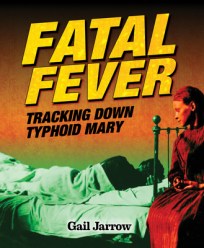
Well done, Mr. Tingle.
Imagine a class full of anxious 5th graders sitting on the rug at your feet begging for the next chapter in our read aloud, How I Became a Ghost by Choctaw native and story teller Tim Tingle.
As a teacher, I incorporate every moment into a teaching moment, and storytelling is no different. This is my third year reading this book aloud and a common comment after each session is how much my students love this story.
A couple of years ago, I sent two students on an errand, and they later burst through the classroom doors out of breath. They said they had run as fast as they could across the campus to get back before I started reading. I realized then, that I shouldn’t send kids on errands or make kids do catch-up work when we were visiting the land of the Choctaw on the Trail of Tears.
How I Became a Ghost is not only entertaining, it is also brutally honest. It is a tale of the Trail of Tears, when Native Americans were forced to leave their homes in Mississippi and relocate to land now called Arkansas and Oklahoma.
The story is told through the eyes of Issac, a ten-year old Choctaw. In the very beginning, Isaac announces to his readers (or listeners in this case) that he is going to be a ghost soon. And because of his condition, premonitions of grisly events begin to plague him.
This is where the brutally honest part comes in. There are many disturbing scenes that are so well-told, that the kids shriek in shock. But they get it. And they are anxious for you to keep reading. For example, during one of Isaac’s premonitions, he sees an old Choctaw couple burning in flames. Soon after, the same couple die when soldiers sneak into the neighborhood at night to set everyone’s homes on fire. And then there is the premonition of pus-filled sores covering some of the tribe’s bodies. You guessed it. Soldiers ride into camp and offer the shivering population blankets exposed to Smallpox.

Choctaws were removed west of the Mississippi started in 1831. Louisiana Indians Walking Along a Bayou by Alfred Boisseau was painted in 1846.
Smallpox became a huge topic in the classroom and I had to teach a mini-lesson on communicable diseases (which ties into our Health curriculum) and the use of diseased blankets. The bigger story, which we discussed several times, was the relationship between native tribes, societal beliefs, and the government in the 1830s.
Because Tim Tingle is a master storyteller, tie-ins to Native American culture are seamlessly woven into the story. We learn how the spiritual world is part of the family unit and how those who have passed on look after and protect those still walking the earth. When Isaac becomes a ghost, his story does not stop there. As a ghost he is able to assist the living as they continue their fight to stay alive while walking the trail.
As with most great books, and one that has won many awards, the literary elements are rich. Besides profound sayings worthy of insightful discussion, we examined how imagery comes from the imagination. The scene goes from text on paper to an image inside our heads. In the following scene, Isaac’s feet are frozen in a puddle, and when he pulls his feet up the skin tears off. The kids cringe when this happens, but they understand how bitter cold can affect the body and the desperate conditions of the Choctaw. It is interesting to see imagery taking shape through the imagination of a fifth grader.
Some conversations: What is the author saying? Why does the author make a point of one hundred footprints turning into a thousand? Why were the footprints bloody and not regular footprints?

Isaac looking back and seeing a bloody trail of footprints.

Isaac covered with a blue blanket leaning against a tree with his feet frozen in ice.
One of the reasons I originally chose to read a book on Native American history is because it helps students to build a broader concept of how the U.S. was formed. Books can be powerful tools and it is a tool that sits at the top of my teacher toolbox.

 When I was ten years old, I saw the classic sci fi thriller Alien, on the big screen, in a theater. (there is a story behind WHY ten-year-old me was there in the first place but let’s save that for another day, shall we?) Alien has action, adventure, thrills, chills and good old fashioned jump scares. Almost forty years later, it’s still terrifying.
When I was ten years old, I saw the classic sci fi thriller Alien, on the big screen, in a theater. (there is a story behind WHY ten-year-old me was there in the first place but let’s save that for another day, shall we?) Alien has action, adventure, thrills, chills and good old fashioned jump scares. Almost forty years later, it’s still terrifying.










